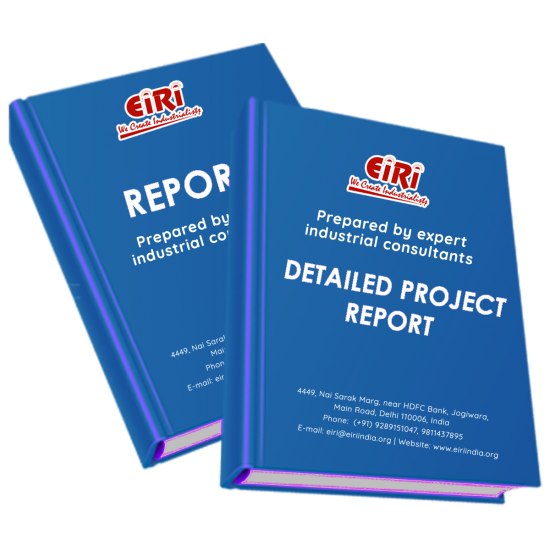The project report includes Present Market Position and Expected Future Demand, Market Size, Statistics, Trends, SWOT Analysis and Forecasts. Report provides a comprehensive analysis from industry covering detailed reporting and evaluates the position of the industry by providing insights to the SWOT analysis of the industry.
Zinc oxide is an inorganic compound with the formula ZnO. ZnO is a white powder that is insoluble in water, and it is widely used as an additive in numerous materials and products including rubbers, plastics, ceramics, glass, cement, lubricants, paints, ointments, adhesives, sealants, pigments, foods, batteries, ferrites, fire retardants, and first-aid tapes.
ZnO is a wide-bandgap semiconductor of the II-VI semiconductor group. The native doping of the semiconductor due to oxygen vacancies or zinc interstitials is n-type. This semiconductor has several favorable properties, including good transparency, high electron mobility, wide bandgap and strong room-temperature luminescence. Those properties are valuable in emerging applications for: transparent electrodes in liquid crystal displays, energy-saving or heat-protecting windows, and electronics as thin-film transistors and light-emitting diodes.
Zinc compounds are numerous and are widely used. Perhaps most important is zinc oxide (ZnO), a versatile compound with many uses. Other zinc compounds include zinc chloride, used as a wood preservative, in soldering fluxes, as a mordant in dyeing textiles, and in adhesives and cements; and zinc sulphide, used in making lithopone, as well as television screens and X-ray apparatus.
Organic accelerators almost always need activators to achieve the highest efficiency in sulphur vulcanization. The most important activator is zinc oxide, which is used in nearly every rubber compound. Zinc oxide is an effective vulcanization activator of very fine particle size and suitable for rubber and latex products based on natural and synthetic polymers.
Zinc oxide is nearly insoluble in water, but soluble in acids or alkalis. It occurs as white hexagonal crystals or a white powder, commonly known in the industry as zinc white. Zinc white is used as a rubber ingredient and as a pigment in paints. Normally less opaque than lithopone, it remains white when exposed to hydrogen sulphide or ultraviolet light. It is also used as filler for rubber goods and in coatings for paper.
Apart from activating sulphur cures, zinc oxide itself is a cross linking agent for polymers containing halogen or carboxyl groups, such as chloroprene rubber (CR), bromobutyl rubber (BIIR), chlorobutyl rubber (CIIR) or carboxylated nitrile rubber (XNBR) and carboxylated styrene-butadiene rubber (XSBR).
Zinc Oxide – This is by far the most important Zinc compound. Zinc Oxide is valuable both for direct application and for production of other zinc compounds. Pure zinc oxide is white at ordinary temperatures, becoming yellow when hot.
It does not melt, but sublimes at ordinary pressures. Zinc Oxide is the most important and widely used compound of zinc. A part from its direct uses in point industry, it has application in glass, rubber, ceramics, coated fibres, textiles and pharmaceutical and toilet industries. It can be the base chemical for the manufacture of most of the zinc compounds.
Zinc oxide, also known as zinc white, is a course white or greyish powder. The degree of whiteness is affected by the presence of impurities it carries. Through effective heat treatment or by other methods, a whole series of colours ranging from white through yellow, green & brown to red can be obtained.
The process for zinc oxide manufacture can be roughly divided into two types, the direct processes and the indirect processes. The direct methods use zinc ores as a source of zinc and the product is commonly referred to as American Process. The indirect method use zinc metal as the raw materials and the product is known as French process.
Zinc oxide covers under the group of white pigments which are the main raw material for paint industry. There are others white pigments e.g.
Basic Carbonate White Lead
Basic Sulphate White Lead
Basic Silicate White Lead
35% Leaded Zinc Oxide
Zinc Sulphate
Lithone
Titanium dioxide (A) & (R)
Zinc Sulphide
Titanium calcium (R)
But zinc oxide is very important and most useful pigment, because of its valuable properties. This has been in use for over a century. Because of its extreme whiteness, its ability to improve the drying and hardening character of paint films by reacting with oils present is one of most indispensable chemical required in paint industries. It is also used in rubber industries, ink manufacturing industries ceramic industries and have so many other uses.
The French process also known as indirect process starts with purified zinc metal. Which is melted in a graphite crucible and vaporized by boiling. Temperature at this stage reach around 1000oC, Oxygen is then added to the vapour in a combustion zone.
Because, the source material and the high temperature requires the French process is more expensive than the American process. French process zinc oxide is more expensive to buy than American processed Zinc Oxide. The French process produces Zinc Oxide with the highest purity and a fine particle size due to its smaller particle size. French processed Zinc Oxide offers increased reactivity and faster cure rates.
The global Zinc Oxide (ZnO) market size is projected to grow from USD 4.4 billion in 2019 to USD 5.7 billion by 2024, at a compound annual growth rate (CAGR) of 5.4%, during the forecast period.
It is intended to prepare a Feasibility Report to install 4800 Tons/Year Zinc Oxide (French Process) production facility as a Green Field Project.



